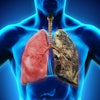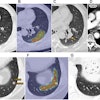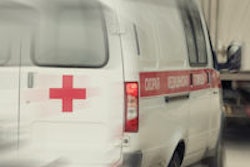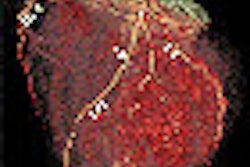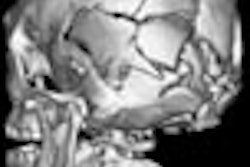Imaging studies to identify rib fractures in deceased infants and young children are not sensitive enough to replace forensic autopsies, according to an article published in the June issue of Pediatric Radiology.
In experienced hands, post-mortem thoracic CT imaging may be beneficial if an autopsy is not performed, or to guide more targeted forensic examinations by pathologists to particular ribs of interest, according to researchers from the Hospital for Sick Children in Toronto. Radiography was not recommended due to its much lower sensitivity level.
"Post-mortem thoracic CT provides greater sensitivity than radiography in detection of post-mortem pediatric rib fractures, most notably in anterior and posterior fractures," the authors wrote. "Thoracic CT might also aid detection of acute fractures, such as fractures potentially related to CPR" (Pediatric Radiology, June 2011, Vol. 41:6, pp. 736-748).
The study team conducted a retrospective study of 56 coroner's cases in which both post-mortem radiography and a thoracic CT scan had been performed, as well as an autopsy, between January 2007 and October 2009. To assess the effect of reader experience on results, a radiologist with 22 years of experience independently reviewed all images from 13 patients with positive findings on radiography, CT, or autopsy, but was blinded to any information obtained from those procedures.
The research objective was to determine the additional value of post-mortem thoracic CT compared with radiography in detecting pediatric rib fractures and fracture healing, according to lead author Dr. Terence Hong of the department of diagnostic imaging.
More than 80% of the children were younger than 2 years of age at the time of death, with an age range of 8 days to 8 years. Two children had died of neglect or abuse, and five had suspected abuse. Autopsies had identified fractures in three of these children.
Fracture identification
Using autopsy findings as the gold standard, the radiologists who had provided the primary interpretation identified 24 (29%) of 83 rib fractures on radiographs, compared with 46% by the radiologist participating in the study. However, the radiologist in the study did not identify any of the 20 fractures sustained by four of the children.
The primary interpretation identified 52 of 101 total fractures from CT images, or 51% compared with 85% by the radiologist in the study. The consistent identification of more fractures by the highly experienced radiologist suggests that the degree of improvement in sensitivity might be dependent upon experience, according to the authors. They stated that there was a learning curve associated with CT imaging and interpretation of pediatric rib fractures.
The authors noted that while x-ray imaging represents the reporting standard for detecting rib fractures in children who are or are suspected of being victims of abuse, CT may show improved sensitivity in identifying anterior fractures and may enable a radiologist to better detect additional acute fractures. In their study, all but one acute fracture was recognized on CT images, whereas 28 acute fractures were not seen on x-ray images.


